During our recent visit, we were fortunate to visit several UNESCO world heritage sites in Sri Lanka. UNESCO world heritage is an important designation conferred by the United Nations Educational, Scientific and Cultural Organization (UNESCO) on cultural and natural sites that are considered to be of exceptional value to humanity. The designation is intended to help protect these sites from destruction and to promote international co-operation in their preservation. Sites that are officially recognized by UNESCO as world heritage sites are typically given special protection by the governments of countries that are members of the organization. This helps to ensure that the sites are preserved for the benefit of future generations.
Importance of UNESCO World Heritage sites in Sri Lanka
UNESCO world heritage sites in Sri Lanka are important for many reasons. First and foremost, they are important reminders of the country’s rich cultural heritage and history. They also provide opportunities for the country’s people to learn more about its cultural heritage and to enjoy it in a safe and protected environment. Finally, UNESCO world heritage sites in Sri Lanka, promote economic development and tourism in Sri Lanka by drawing attention to the country’s unique cultural heritage.
In the case of Sri Lanka, the heritage sites almost trace the history of Sri Lanka from its first capital Anuradhapura to its last capital, Kandy, before Britishers arrived.
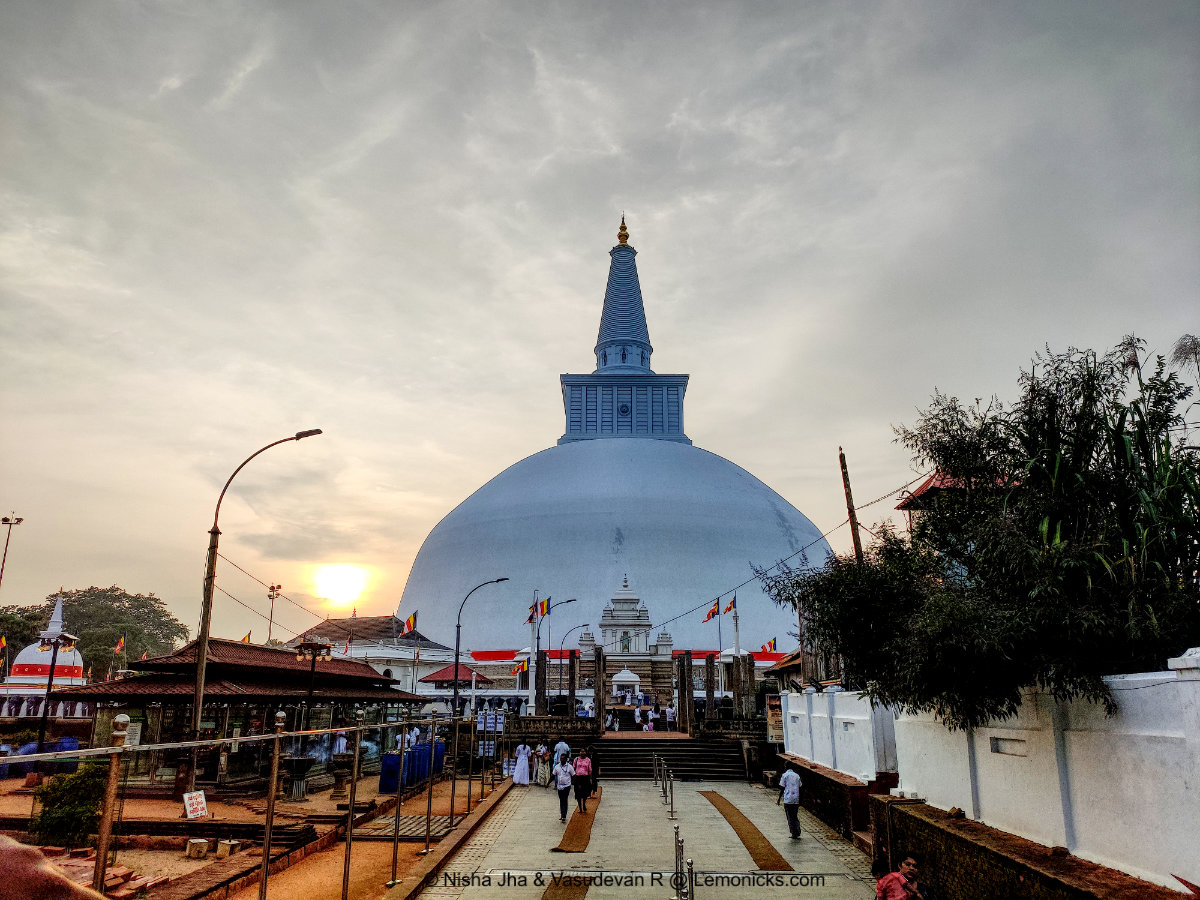
Sacred City of Anuradhapura
Anuradhapura, located in the North Central plains, is regarded as the first capital of Sri Lanka during the reign of King Pandukabaya. It was the capital much before Buddhism arrived in Sri Lanka, in the 3rd Century BCE. History of Buddhism in Sri Lanka starts with the 3 visits of Gautama Buddha to Sri Lanka. However, Buddhism was not embraced by either the royalty or the citizens, in a big way.
Buddhism became the official religion of the kingdom after the arrival of Arahat Mahinda (Mahindra, son of Emperor Ashoka), who was already a monk of some stature. Mihintale is the place where the meeting between the monk and King Devanampiya Tissa, took place and where the king along with his nobles became the followers of Buddhism.
Later, at the behest of Arahat Mahinda and the request of the Tissa, Emperor Ashoka sent his daughter Sanghamitta (Sanghamitra) with a cutting of the Bodhi Tree in Gaya to be planted in Sri Lanka and to establish the order of the Buddhist nuns (Bhikkhuni).
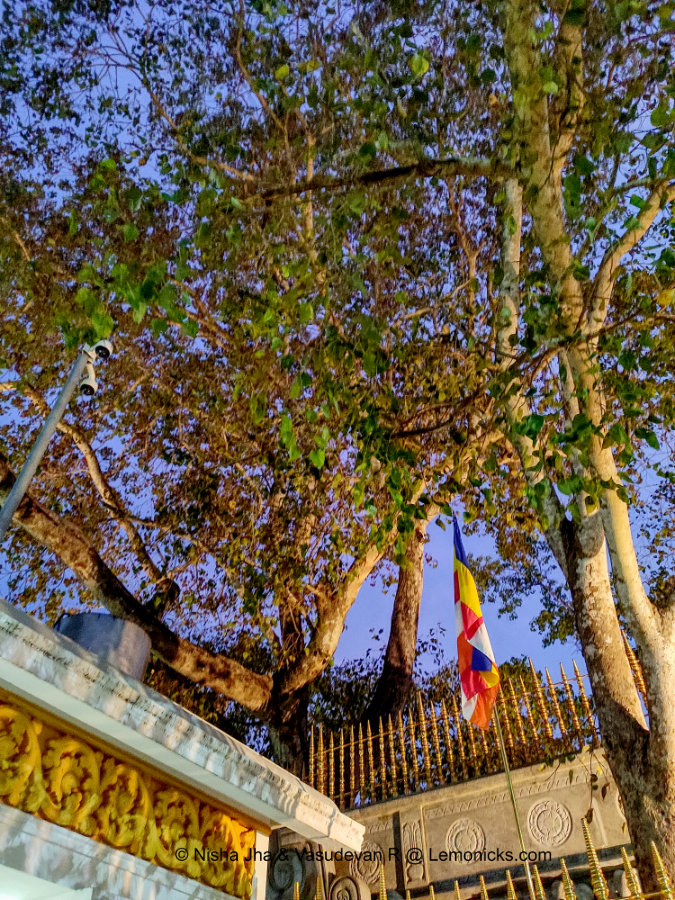
This bodhi tree was planted in Anuradhapura and is well maintained. As per UNESCO, the sacred city which was built around this bodhi tree (including this 2300 years old tree) is part of the UNESCO World Heritage Sites in Sri Lanka and inscribed as the “Sacred City of Anuradhapura”.
After Raja Raja Chola (of Ponniyin Selvan fame) from South India invaded and sacked Anuradhapura, it was abandoned by the folks and the capital was shifted to Polannaruwa, around 11th century CE. The 1300 years old capital was soon covered in forest only to be rediscovered sometime in the 18th century by a team of Sri Lankan and British Archaeologists.
The numerous stupas, temples, palaces and monasteries have been unearthed by the archaeologists and conserved for tourists to enjoy.
The important points of interests are,
Sri Mahabodhi Tree
Sri Mahabodhi tree at the Mahamewena Gardens. The tree complex from a single cutting from the Bodhi Tree (Ficus Religiosa or Peepal tree) from Bodh Gaya which was brought to Sri Lanka by Sanghamitra, Daughter of Emperor Ashoka.
The tree has been tended for 2300 years, even when rest of the city was taken over by vegetation after 11th century. It is now standing with the help of steel frames and pillars supporting it.
Isurumuni Raja Maha Viharaya
This vihara was one of the first built, by King Tissa, for 500 people of noble class, who were ordained to be Buddhist monks, right after King Devanampiya Tissa, became a Buddhist. The temple seems to be carved into the rock.
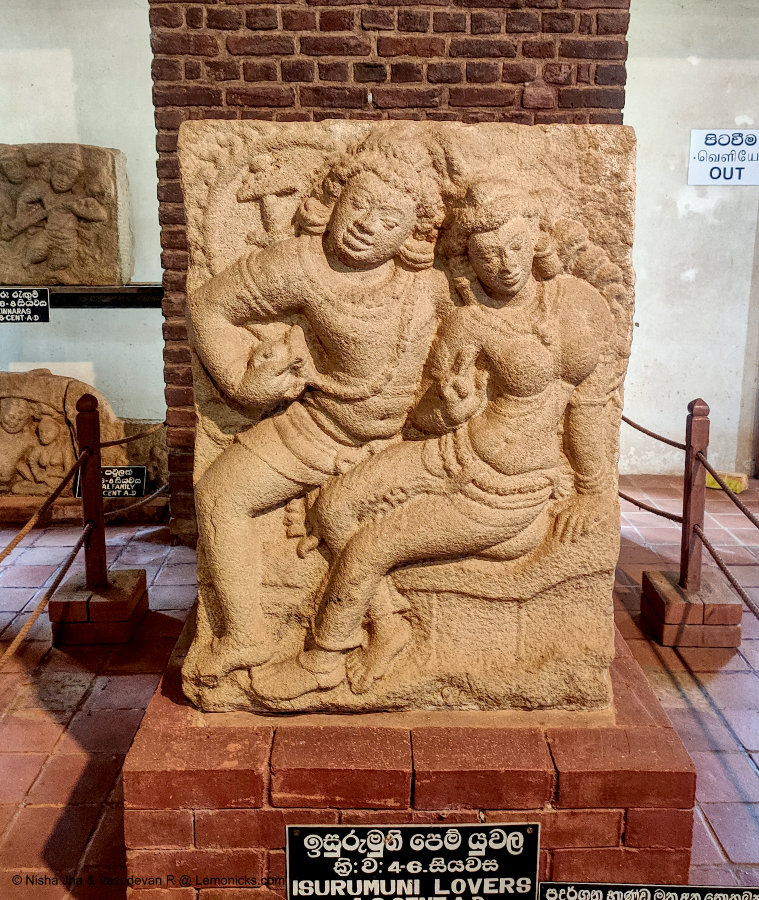
There are some interesting carvings here, including that of two lovers. It is said they depict the son of the King, Prince Saliya and a girl of lower strata, Ashokamala and for whom the prince gave up the throne.
Entry ticket is Lankan Rupees 500 and is separate from the Anuradhapura combined ticket.
Thuparamaya Stupa
This is said to be the first ever stupa built in the 3rd century BCE, after the arrival of Arahat Mahinda and Buddhism in this island country. Thuparamaya is said to enshrine the right collar bone of Gautama Buddha. Thuparamaya was itself part of a much bigger hemispherical vihara that was either vandalized or broken up due to aging. There are stone pillars which stand testimony to the existence of a larger structure.
Ruwanwelisaya or Mahathupa
Ruwanwelisaya or Swarnamali Seya or Ratnamali Seya or Mahathupa, is the largest Stupa or Dagoba in Sri Lanka. Stupas almost always have relics or artefacts belonging to Buddha. This stupa has to its credit, the greatest number of relics enshrined amidst chanting, by several layers of stone and bricks. It was built in the second century BCE by King Dutugemunu.
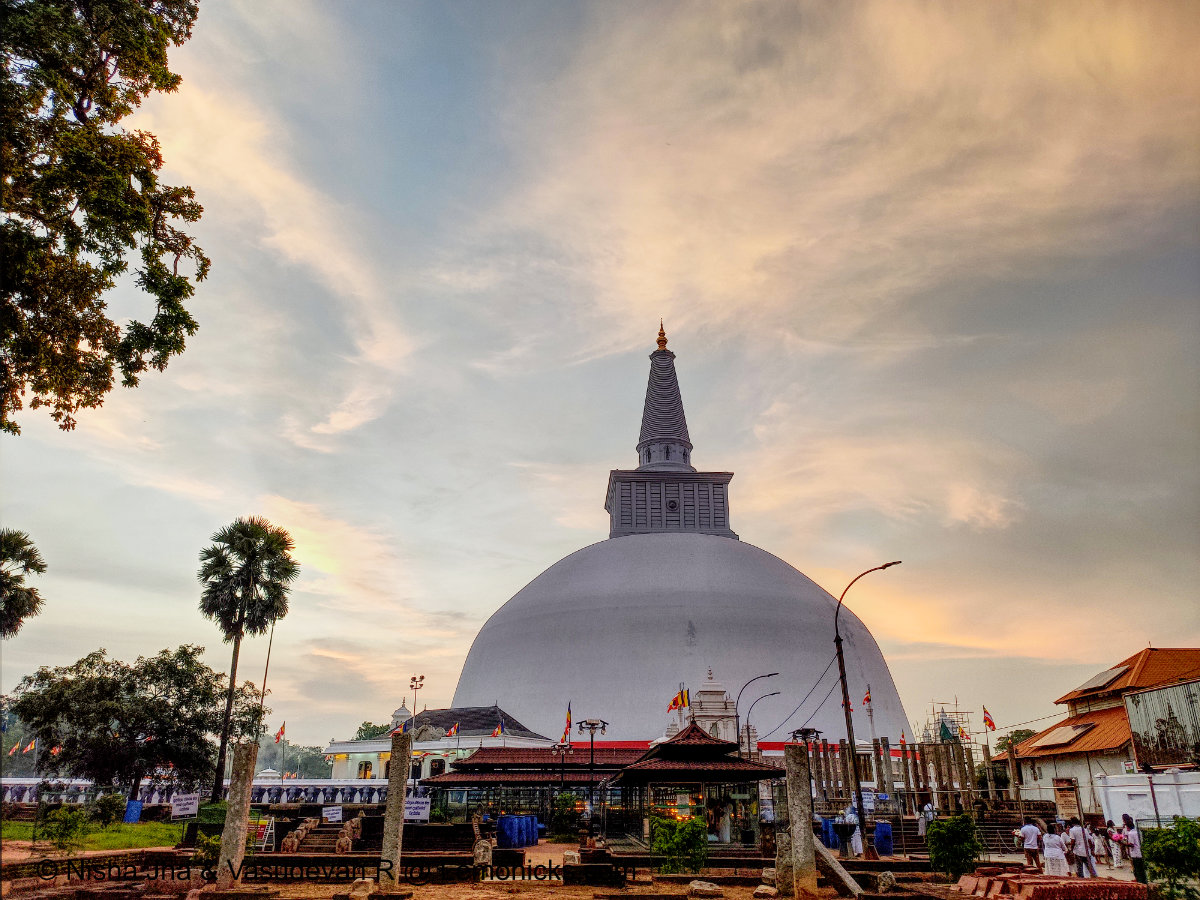
The Stupa must have undergone several renovations and restoration till it was covered by forest. Ruwanweliseya, is one of the Atamasthana (Ashthama Sthana), 8 venerated places for Buddhist Pilgrimage. During the evening time, there will be a lot of devotees wearing white, offering their prayers at this stupa.
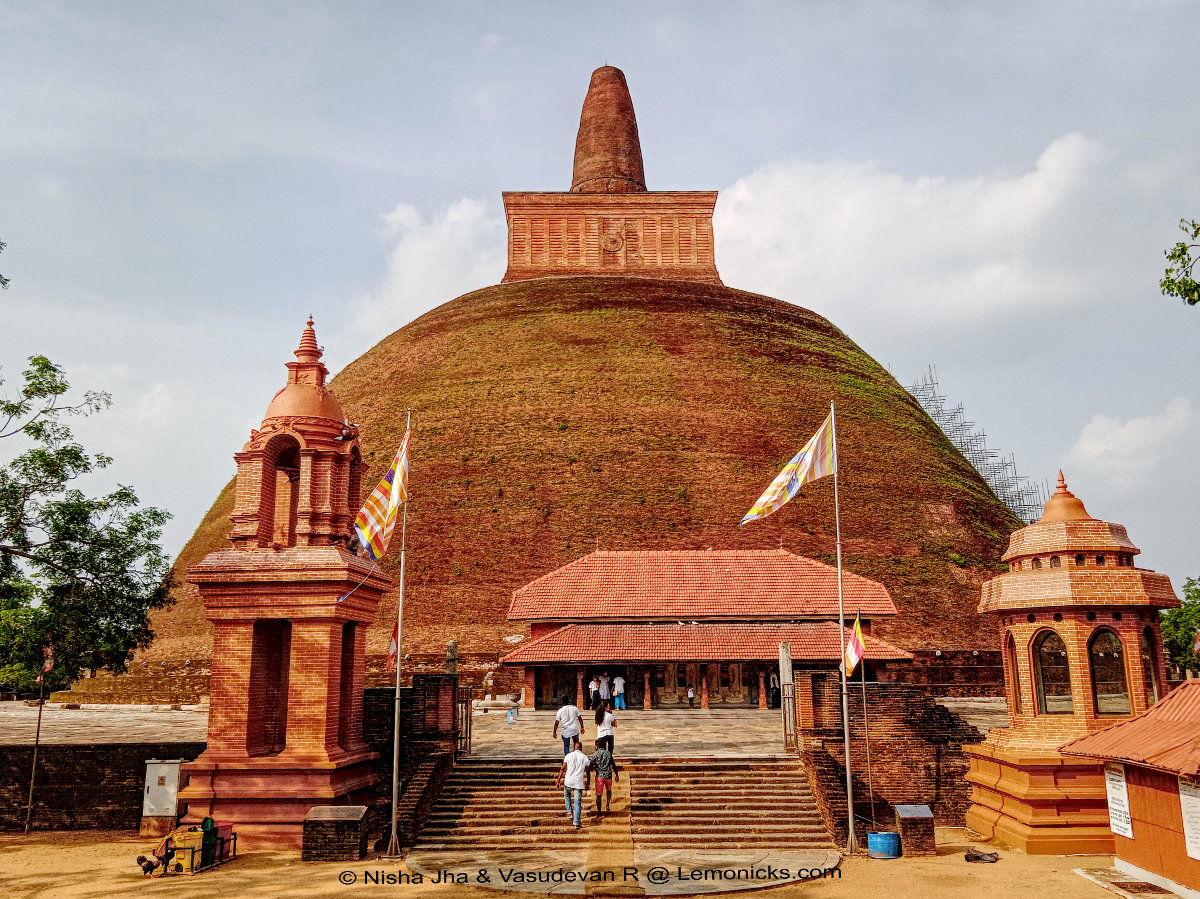
Abhayagiri Dagoba (Abhayagiri Vihara)
This colossal stupa was built in the 1st century BCE. The brick structure has now been restored to almost its original height. This stupa was originally built as a monument to the King Vattagamini Abhaya reclaiming Anuradhapura after 14 years in exile. It was also the original home to the tooth relic in later period. It is said that 5000 monks used to live there.
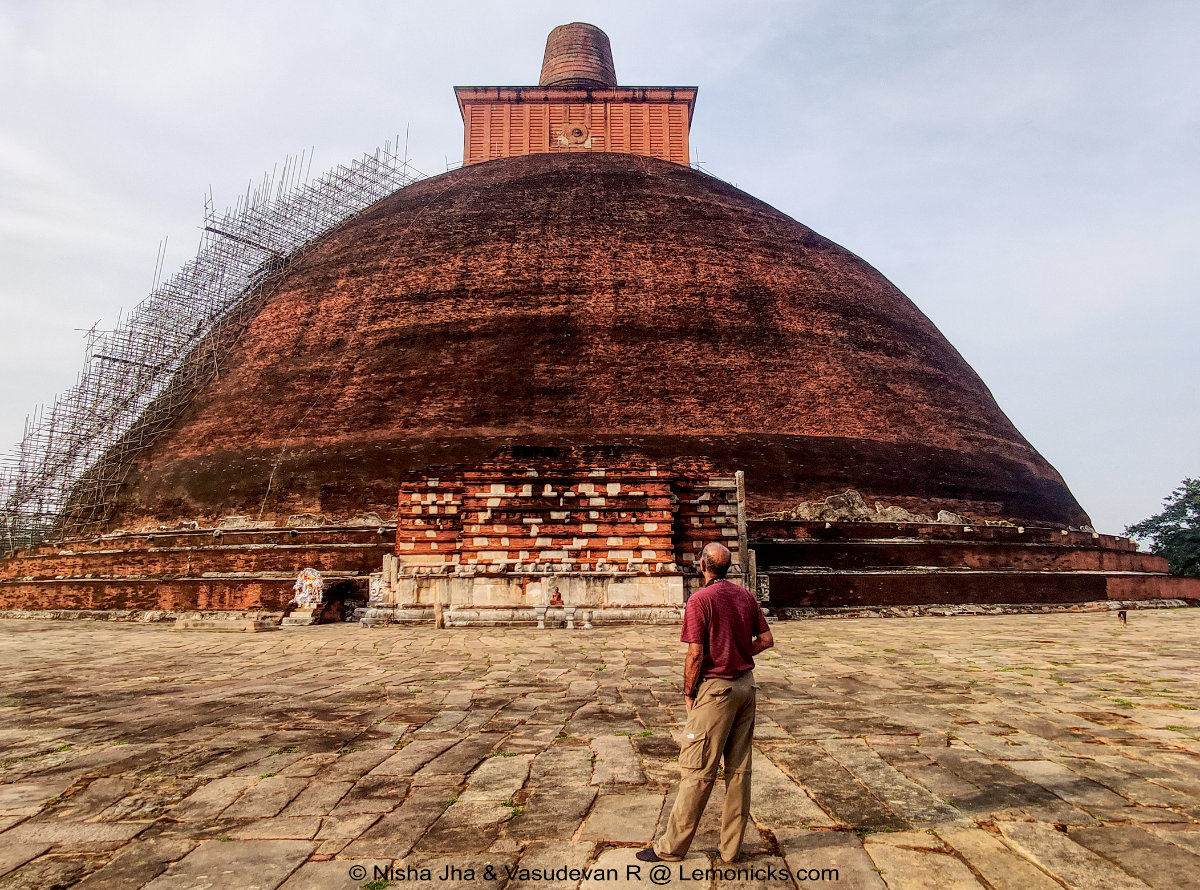
Jethavanaramaya (Jethavanarama Stupa)
Another colossal brick Stupa is much bigger than Abhayagiri Vihara. It is also well preserved and conserved, and I found that there were fewer people circumambulating and it put me in a meditating mode even while walking. One does feel so small in front of all these structures. At 122M this would have been the tallest, had it not fallen and rebuilt to its current height by the King Parkramabahu (we will talk about him soon).
Useful Information on Anuradhapura
There are museums, parks and several more sites that have been excavated and presented.
Entrance Fee
$12.50 – Citizens of Saarc Nations
$25 – Other Foreigners
No entry fee for Locals
This does not include Sri Mahabodhi Tree
Time taken to visit all the major sites of Anuradhapura.
Anuradhapura is spread over a large area, and it would take 4 to 5 hours to explore the whole place. It is best to do it in your own vehicle.
How to reach Anuradhapura and what are the distances
Anuradhapura is about 200 KM by road from Colombo. It is most convenient to travel by own vehicle.
However trains and buses are also available.
Where to Stay at or near Anuradhapura
It is most convenient to stay in Habarana or Dambulla as one cover other areas of interest too.
Please Click here for accommodation options in Dambulla and Habarena
Ancient City of Sigiriya, the Hilltop Palace
The ancient city of Sigiriya, which was built in the 5th century CE, was inscribed as UNESCO world heritage sites in Sri Lanka in 1982. It says, “The ruins of the capital built by the patricidal King Kassapa I (477–495) lie on the steep slopes and at the summit of a granite peak standing some 180m high (the ‘Lion’s Rock’, which dominates the jungle from all sides). A series of galleries and staircases emerging from the mouth of a gigantic lion constructed of bricks and plaster provide access to the site.”
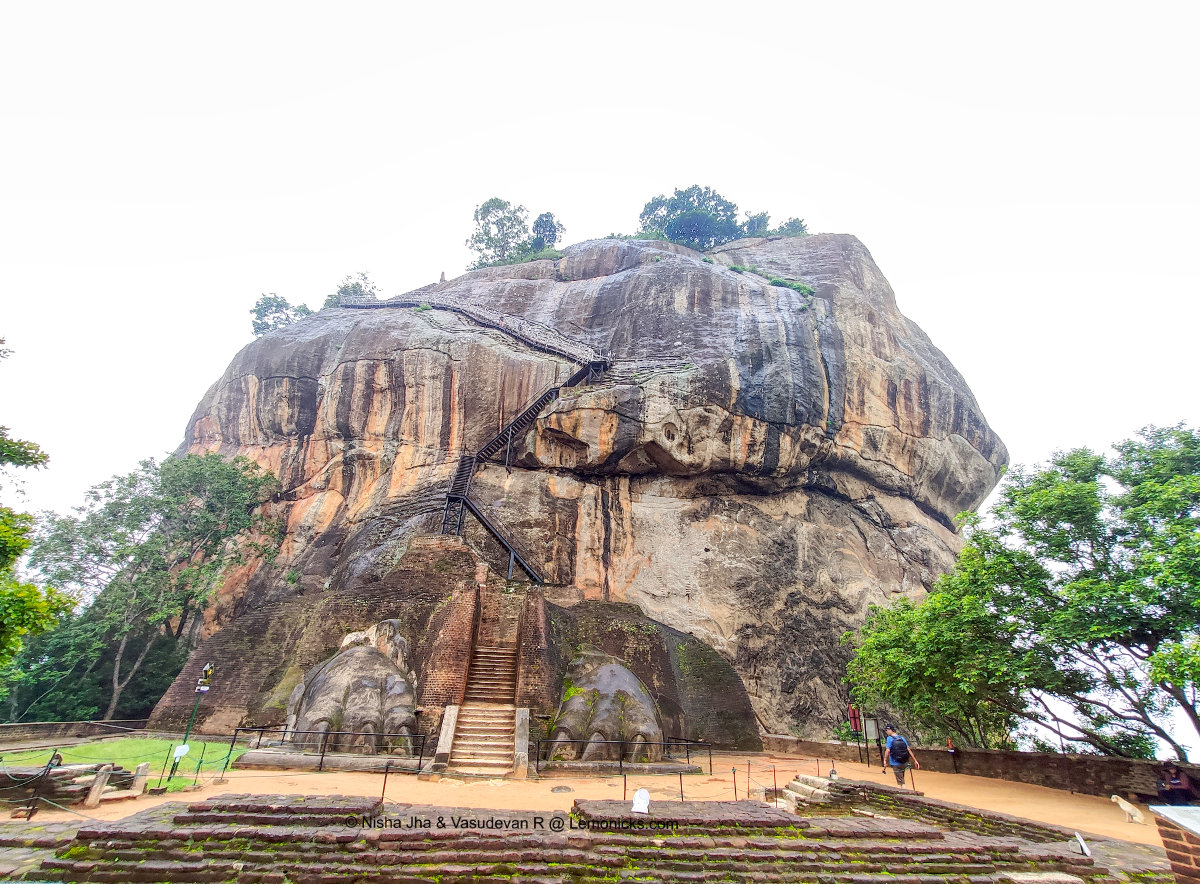
Sigiriya is an evolved word from Sinhagiri or Singagiri, which means Lion Mountain or Lion Hill. In 477CE, Kasyapa (Kashyapa) the son of King Dhatusena of Anuradhapura from a non-royal consort, wanted to usurp power and imprisoned the king and later murdered him, with the help of some of the courtiers. Kashyapa after becoming the king sensed that the citizens were not too happy with his ways and was quite remorseful.

So, he built an elaborate palace on top of Sigiriya rock with the surrounding grounds full of symmetrical gardens and pools for the pleasure of his guests. This was his hiding place for many years before he was forced to take his own life.
One of the sides of the rock was covered with frescoes (like the ones in Ajanta Caves, India).
Only thought in my mind, after climbing the 1200 or so steps to the top, how was this engineering marvel accomplished at a time when almost everything had to be done by manual labor.
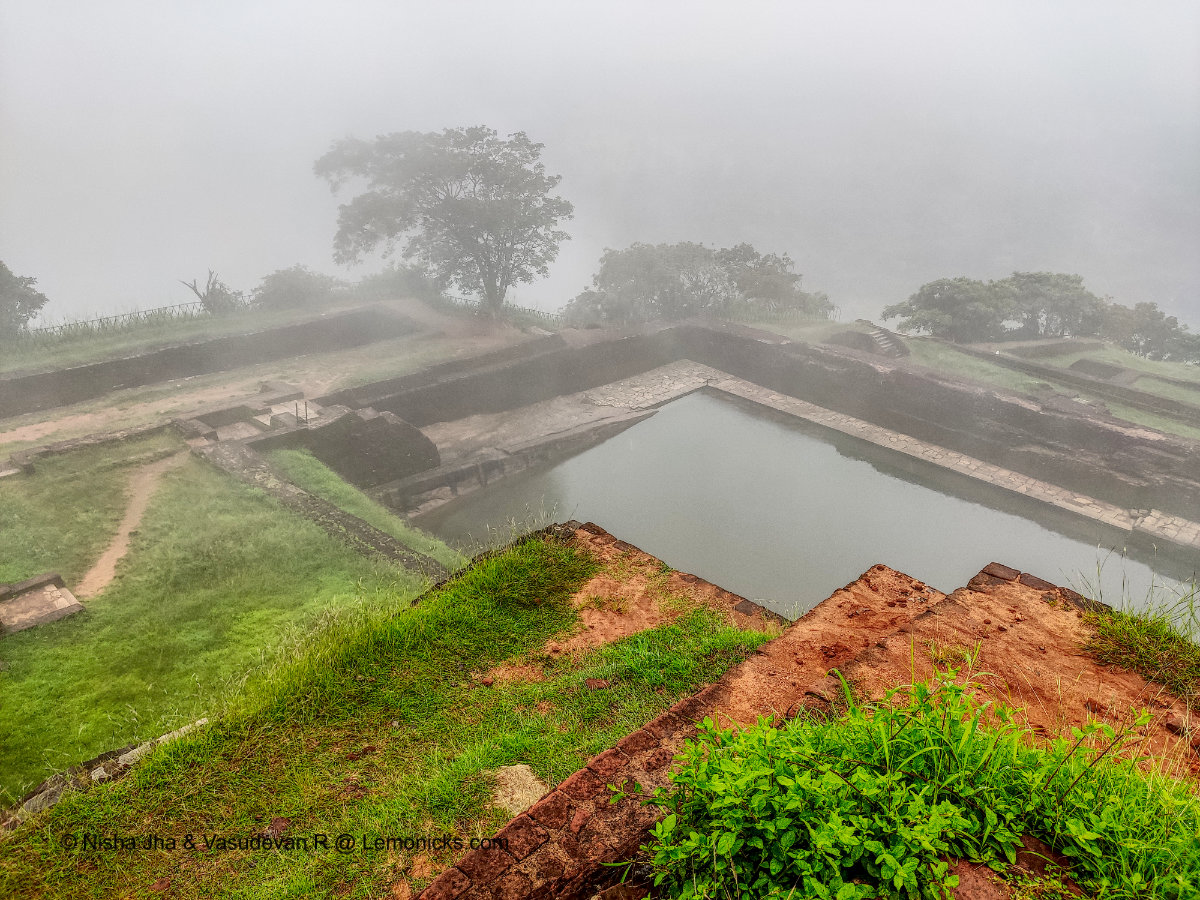
Photography of the Frescoes is not allowed. Other than that, there are no other restrictions in taking photographs while climbing Sigiriya Rock. There are a few caves that may be explored on the way back, near the ground level.
There is another mythology, that Sigiriya top was actually the Golden Palace of Ravana (the demon character from Ramayana) or the flat surface was the airfield used to land the Pushpaka Vimana that he had stolen from Kubera! Or perhaps the airfield was Wariapola! We will never know! By the way Wariapola has another piece of history attached to it, but that’s for later.
Useful Information and Tips about Sigiriya top
Entrance Fee
$15 – Citizens of Saarc Nations
$30 – Other Foreigners
LKR 100 – locals
Opening Hours
7:00 AM – 7:00 PM
(Last entry 5:00 PM)
Total time at the site
3-4 hours for exploring the place including climbing up and down
Climbing Time to Top
1 hour to the top. My altimeter showed the altitude to be about 275 Meters. I did it in one hour which included some time for photography. The base is 100 Meters above sea level. So total altitude gained about 175 Metres.
The best time of the year to visit Sigiriya is January to March (February is the best month). Rain may occur suddenly, so it is best to be ready with a raincoat or an umbrella.
Morning time is the best time to climb Sigiriya Rock before the day warms up and heats up the rock. Some folks say the sunset is very beautiful. Since it is open till 7:00PM one can do that too.
Book your tours
Get Your Guide: Sigiriya Fortress & Cave Temple All-Inclusive Tour
Klook: Sigiriya Lion Rock Day Tour
Ancient City of Polonnaruwa
Ancient city of Polonnaruwa was inscribed as a UNESCO World Heritage Sites in Sri Lanka in the year 1982 and the inscription reads “Polonnaruwa was the second capital of Sri Lanka after the destruction of Anuradhapura in 993. It comprises, besides the Brahminic monuments built by the Cholas, the monumental ruins of the fabulous garden-city created by Parakramabahu I in the 12th century.”
Anuradhapura, after having seen almost 1500 years of prosperity fell to the incessant attacks by the South Indian Emperor, RajaRaja Cholan (nick name – Son of river Kaveri or Ponniyin Selvan) and later by his son Rajendra Chola. Anuradhapura was sacked and the capital moved to Polonnaruwa. We could see several structures which had some similarity to South India Architecture of that period.
Eventually the Sinhalese king Vijayabahu regrouped his forces and laid a successful siege on Polonnaruwa and regained control of the capital in 1070CE. It further flourished under his Grandson, Parakramabahu’s reign. Following are some of the important aspects of the ancient city of Polonnaruwa.
Royal Palace (Palace of King Parakramabahu.

The palace with 1000 rooms which 7 stories high was a no mean engineering feat. What is left is a huge façade with most of the building in ruins.
Nissankamulla Palace or the Royal audience hall.
I was quite impressed by the stonework and scultptures. The also built ponds and gardens.
Polonnaruwa Sacred Quadrangle
The Quadrangle contains the main sacred structures and consists of
Vatdage or the Circular Relic House with intricate moonstones and balustrades and secret compartment to protect the tooth relic which was inside a small stupa with statues of sitting Buddha at the 4 cardinal directions
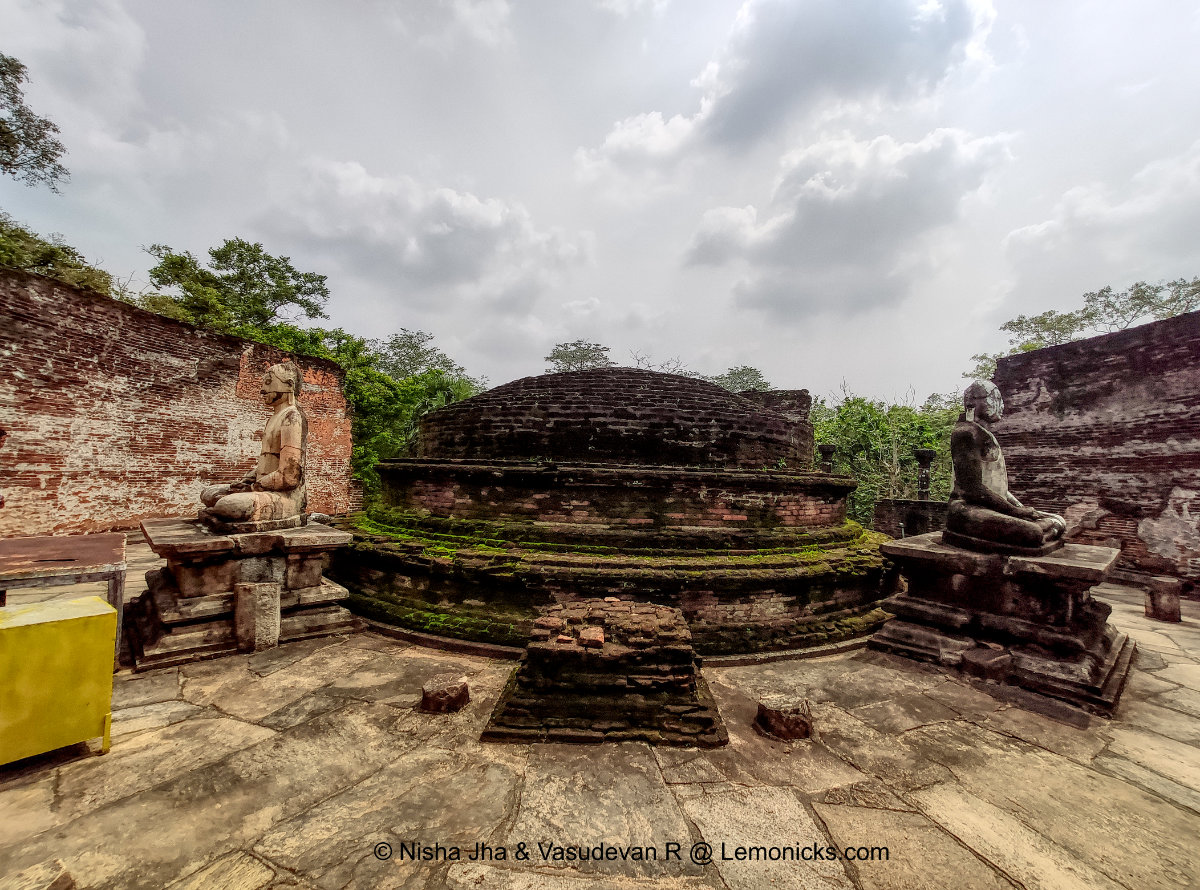
Thuparama , the oldest Image house of Polonnaruwa
Nissanka’s Lotus Pavilion. With a reserved place for the king to sit during chantings and prayers.
Shiva Devala – Shiva Mandir
It is still in service and is said to have been built by Raja Raja Chola.
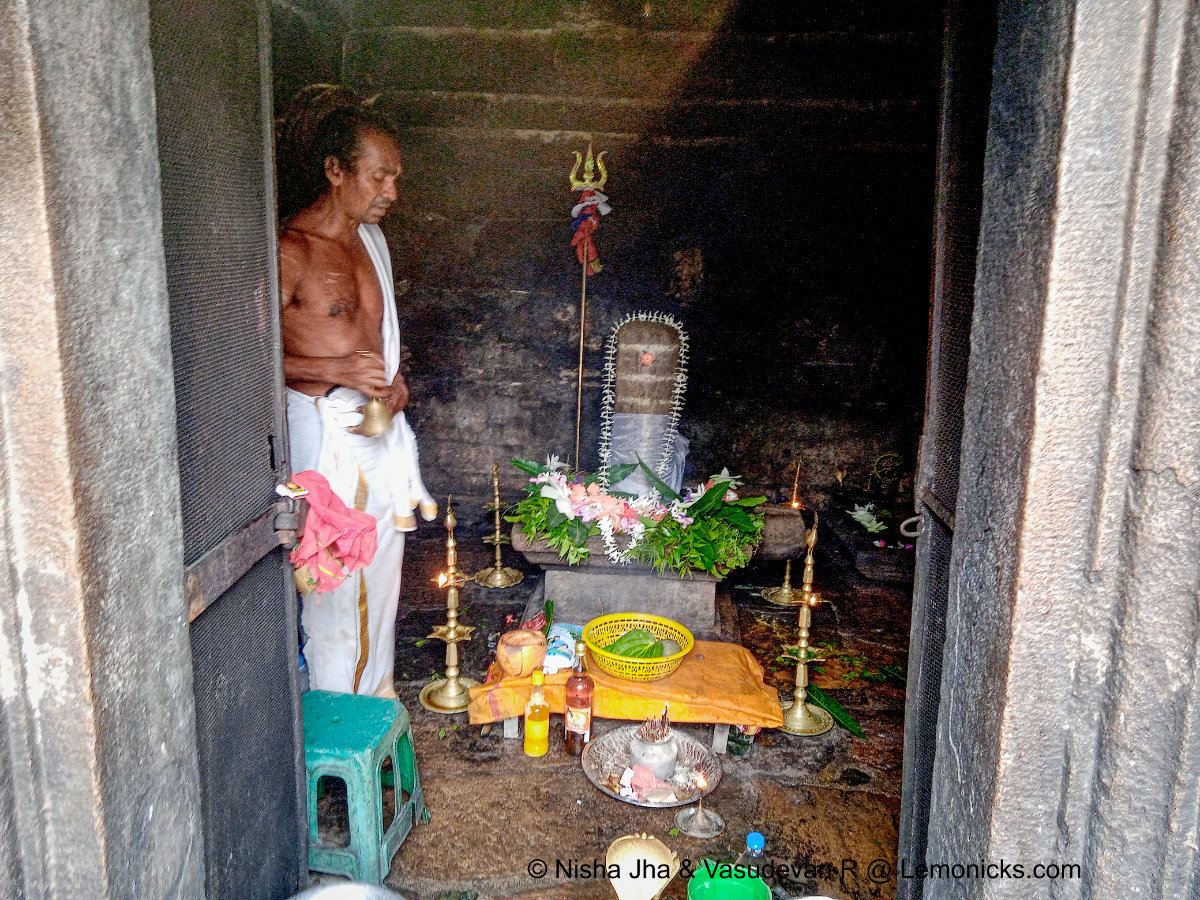
You will find many Hindu structures in ruins around this area all belonging to 10th and 11th century CE
Gal Vihara
A mammoth sculptures of Buddha in sitting, standing and the 46 feet reclining posture, all carved on a single rockface!
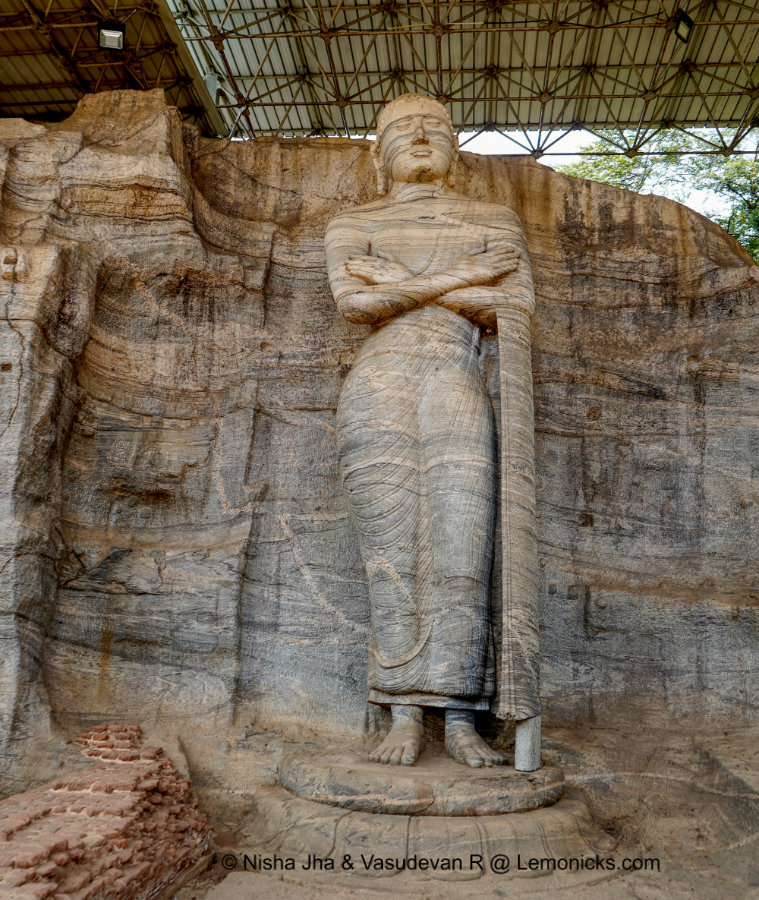
And many more Ponds, Shrines and a Museum.
Useful Information on Polonnaruwa
Time taken to visit all the major sites. Polonnaruwa is spread over a smaller area, in comparison to Anuradhapura and it would take about 3 to 3.5 hours to explore the whole place, depending on your interest. It is best to do it in your own vehicle.
Entrance Fee for Sacred city of Polonnaruwa
$12.50 – Citizens of Saarc Nations
$25 – Other Foreigners
No entry fee for Locals
Where to Stay at or near Polonnaruwa
Please Click here for accommodation options in Dambulla and Habarena
Book your tours
Get Your Guide: Polonnaruwa Cycle Tour
Klook: Polonnaruwa Private Tour
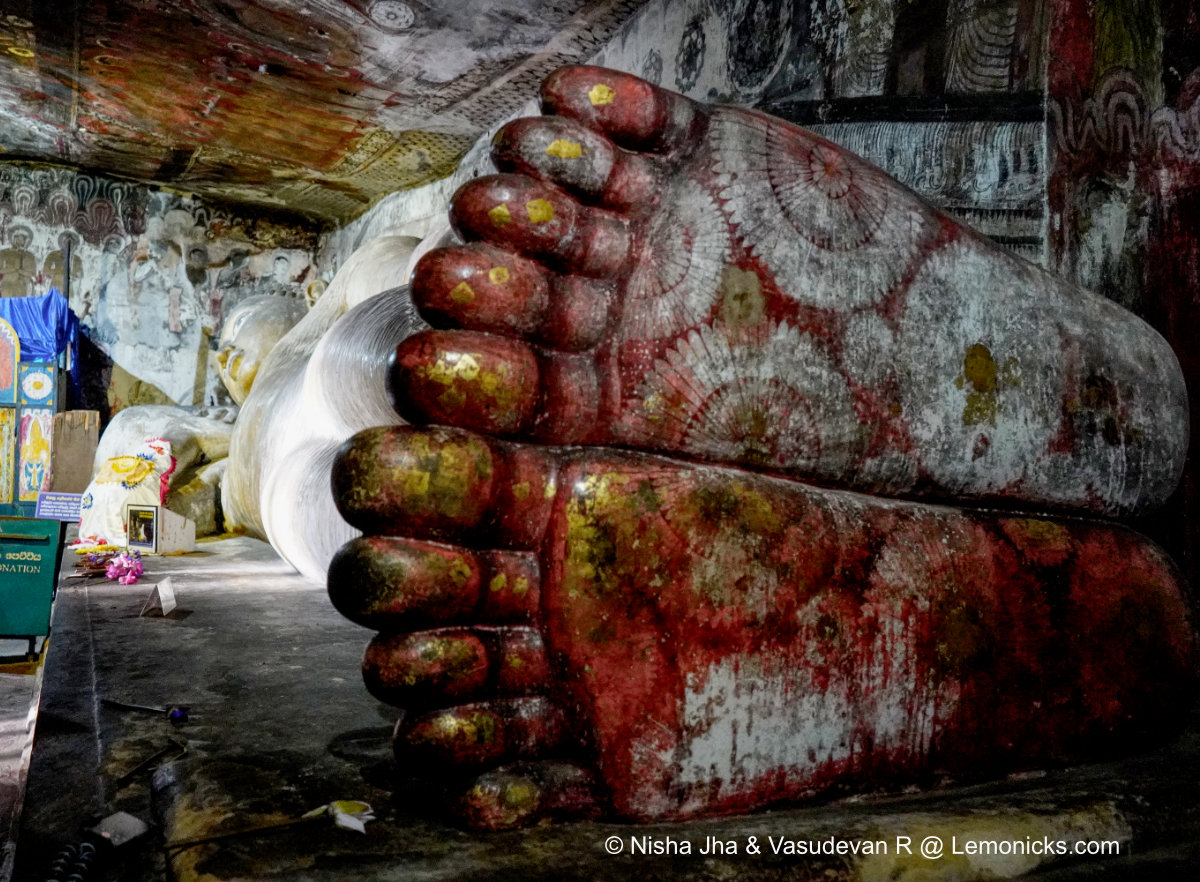
Rangiri Dambulla Cave Temple
Next in my list of 5 Unesco World Heritage Sites in Sri Lanka is Rangiri Dambulla Cave Temple. It was inscribed in the year 1991 and the description is as follows.
“A sacred pilgrimage site for 22 centuries, this cave monastery, with its five sanctuaries, is the largest, best-preserved cave-temple complex in Sri Lanka. The Buddhist mural paintings (covering an area of 2,100 m2 ) are of particular importance, as are the 157 statues.”
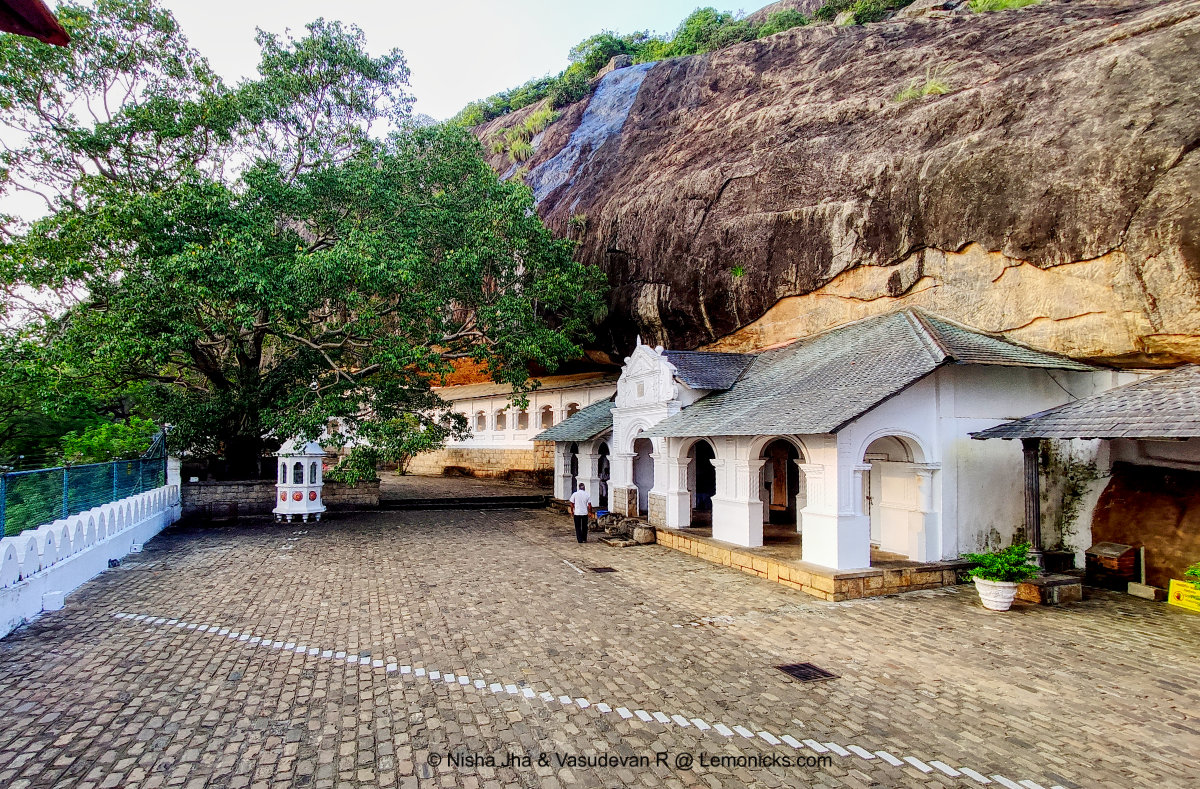
Dambulla cave temple is the largest and best preserved of all the cave temples in Sri Lanka. While there are many caves in the region only 5 are open for tourists and are probably the best.
The statues, images and murals, all have to do with Buddha, Buddhism and related characters. There were a few sculptures pertaining to Hinduism too as also the kings of that period!
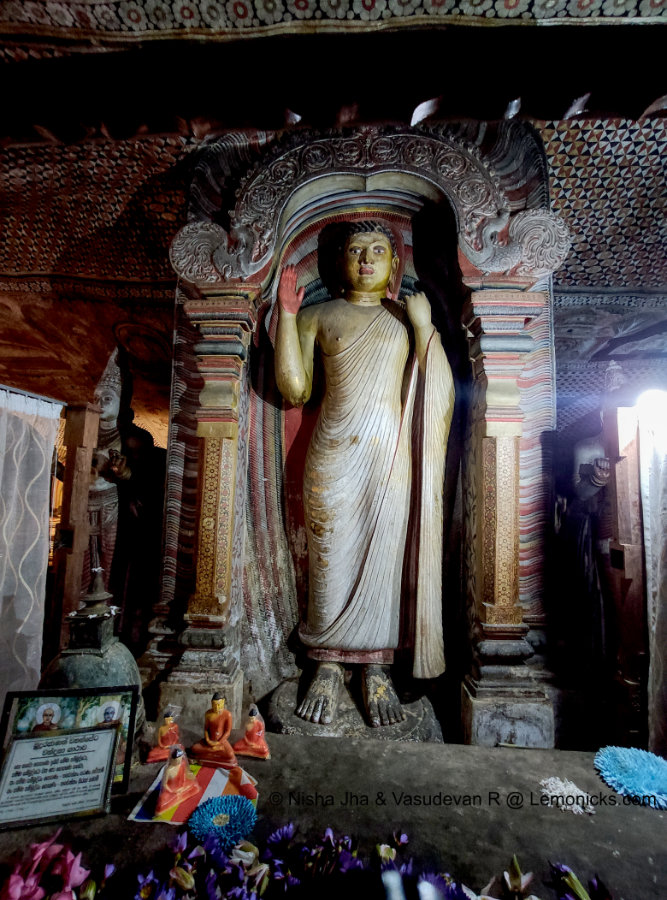
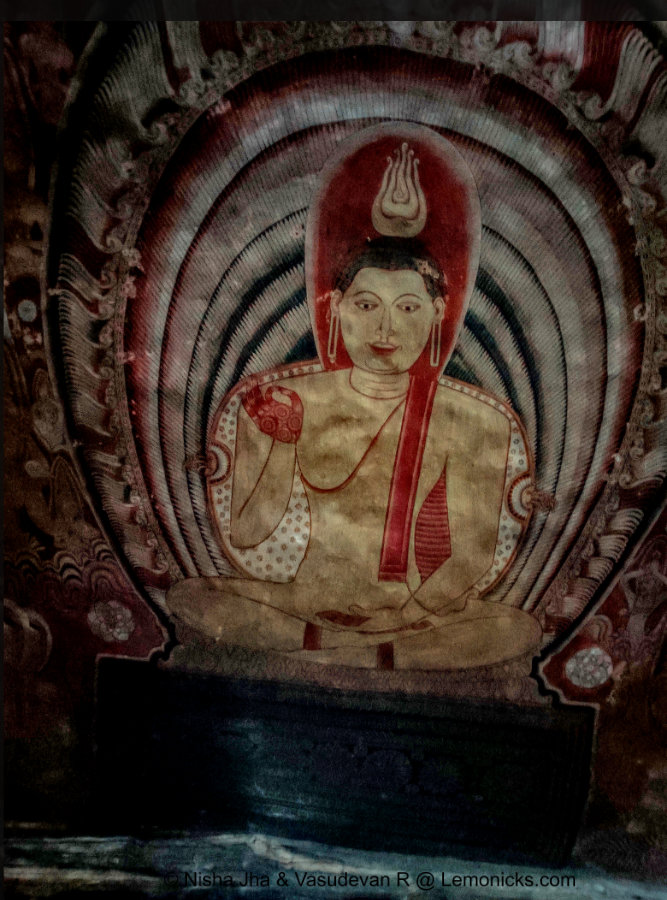
When I climbed the 300 plus steps, I could hardly believe that these images and sculptures were 800 to 2200 years old! That dates it back to BCE! (Before common era). They were in so good condition! Worth a visit.
The point to be noted is that the cave temple is still functional, and visitors are advised to adhere to the dress code.
Entry Ticket
Foreign adult ticket fee is LKR.1500
SAARC adult ticket price is LKR 1000
Sacred City of Kandy
Last but definitely, not the least is the Sacred City of Kandy a UNESCO world heritage sites in Sri Lanka. Inscribed in the year 1988, UNESCO says, “This sacred Buddhist site, popularly known as the city of Senkadagalapura, was the last capital of the Sinhala kings whose patronage enabled the Sinhala culture to flourish for more than 2,500 years until the occupation of Sri Lanka by the British in 1815. It is also the site of the Temple of the Tooth Relic (the sacred tooth of the Buddha), which is a famous pilgrimage site”
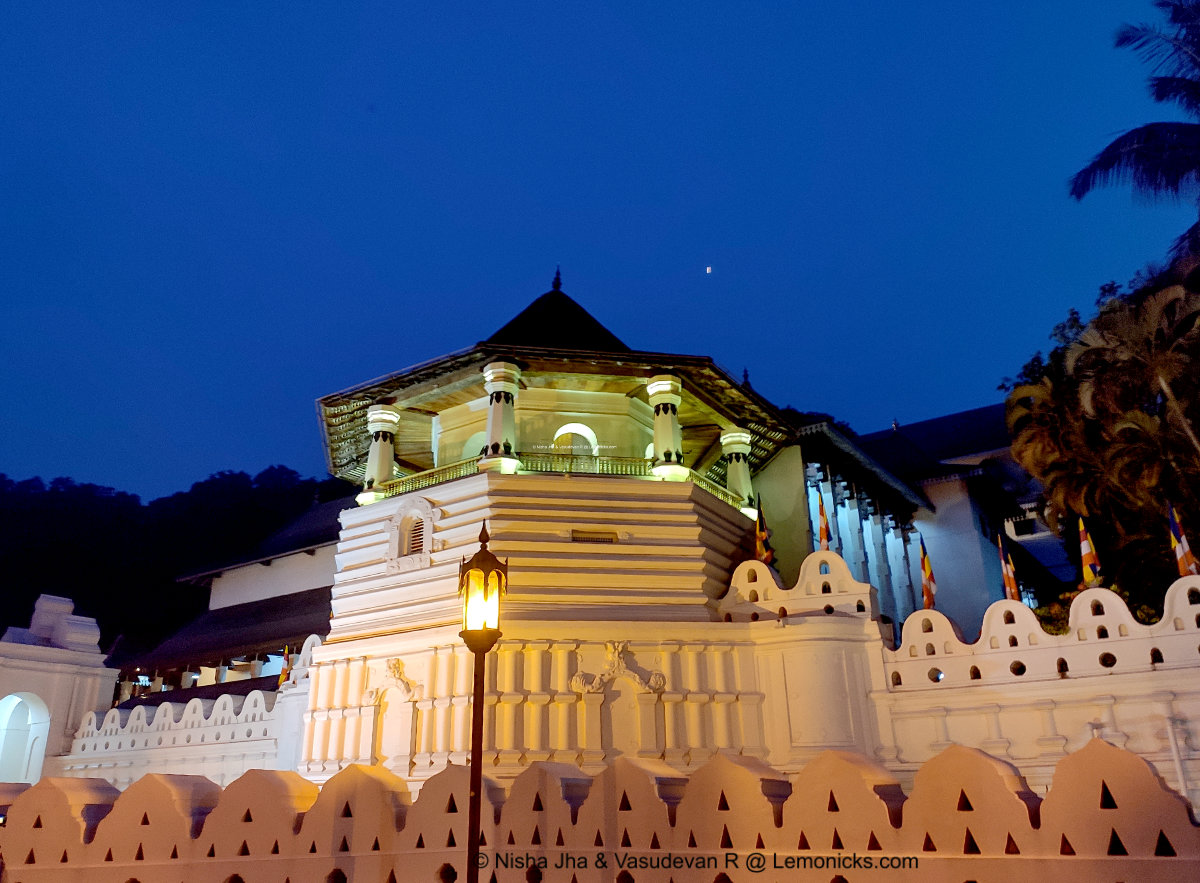
So it really means all the region including the Tooth Relic Temple, Royal Palaces, the lake, viharas and temples are inscribed, which forms the Sacred city.
Kandy was the capital of Sri Lanka from 1469 to 1815. It has been the home to the tooth relic since then. In the year 1815, the British took over this last independent kingdom of Sri Lanka.
Following are things to do in Sacred City of Kandy
Tooth Relic Temple (Sri Dalada Maligawa)
It is the current home of the tooth relic kept inside a golden casket shaped like a stupa inside a three storied building just for the purpose. The evening prayers are not to be missed as you might get a chance to view the golden tooth relic casket.
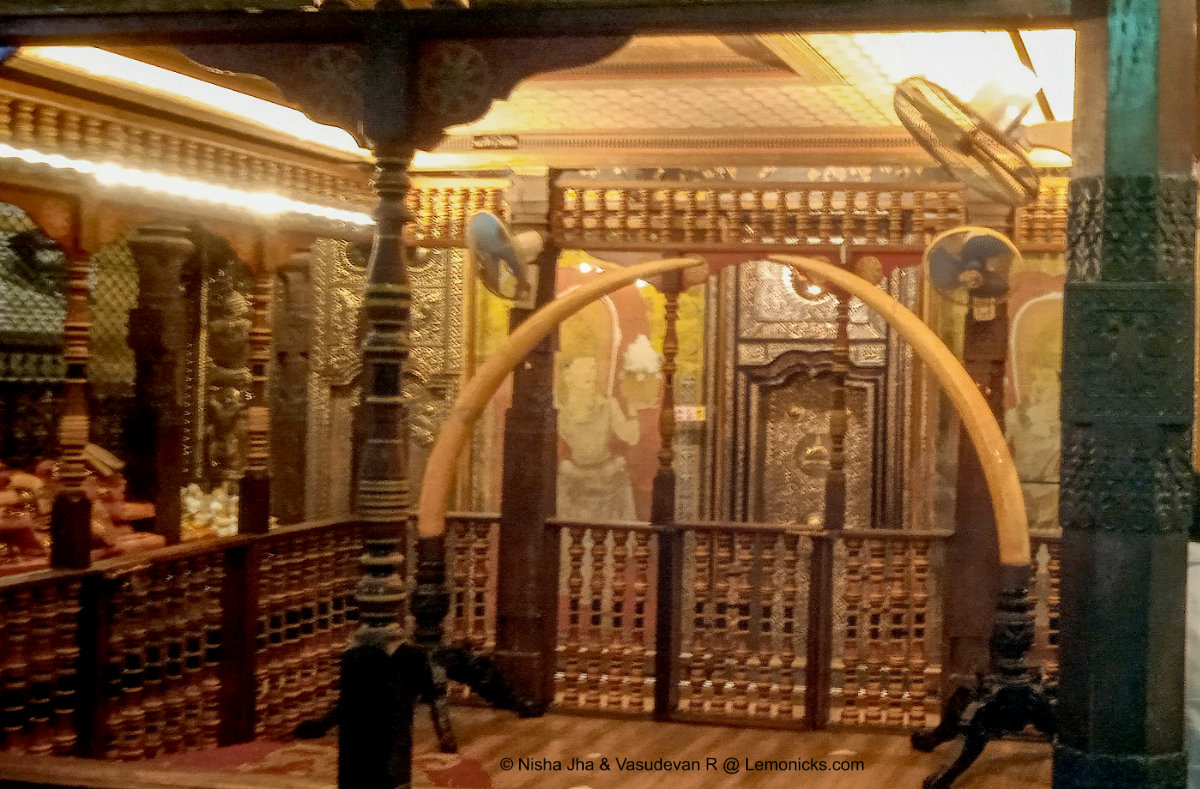
Royal Palace which houses a museum now has several interesting artifacts including very old palm-leaf manuscripts.
Other Shrines and Temples
Shrines of Vishnu, Pattini and Kataragama and Malwatta & Asgiriya monasteries (viharas) around the Tooth Relic Temple and nearby areas.
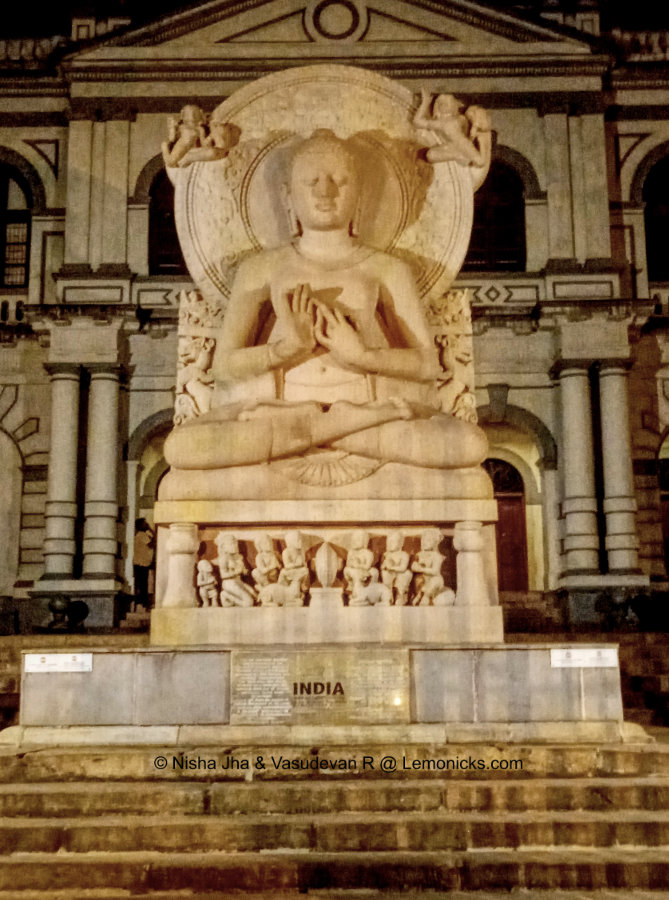
Entry Ticket
Foreign adult ticket fee is LKR.2000
SAARC adult ticket price is LKR 1500
Useful Information about UNESCO World Heritage Sites in Sri Lanka
Tips and Tidbits
- While visiting a religious place, one must dress decently, remove footwear and uncover the head. That is cover shoulders and dress must reach below the knees. If you do not have such clothing then best would be to buy a sarong and a stole OR two sarongs.
- It is widely appreciated if you wear light colored or white clothing to religious places
- Please do not a take a photo of yourself with the image of Buddha in the background. It is frowned upon. There are enough notices saying so.
- If you have a Buddha or Buddhism related Tattoo , better to hide it.
- Sri Lankans are quite friendly and ready to help. So learning a few Sinhalese greetings and phrases would go a long way.
- Climbing on top of Stupa is big NO, even if it is small.
- There may be places which involve climbing steep steps. Better to plan before.
- Sri Lankan cuisine is excellent and is a must try. More so if one is a non-vegetarian.
- With Sri Lankan economy bouncing back slowly and the exchange rate being quite favorable, this is probably the best time to explore Sri Lanka.
- Most hotels have universal electrical sockets. So if you forget your adapter, don’t fret 🙂 . Things will work out.
- Exchange your currency at a bank or sometimes even a store. ATMs charge a bomb on cash withdrawal. Bigger stores and hotels may accept credit cards
Photograph Copyright
All photographs used in this article belong to the owners of this website www.lemonicks.com unless otherwise specified. Copying or using them without explicit permission is prohibited and will amount to copyright infringement.
If you want to travel places with us, we invite you to join our feed or Facebook travel page.
P.S.- This article, 5 Top UNESCO World Heritage Sites in Sri Lanka, belongs to Le Monde, the Poetic Travels, one of the top Indian Travel Blogs, published by the traveling couple bloggers, Nisha & Vasudevan. Reproduction without explicit permission is prohibited. If you are viewing this on another website other than the RSS feed reader or www.lemonicks.com itself, then that website is guilty of stealing our content. Kindly do us a favour by letting us know via Contact Us. Thank you.
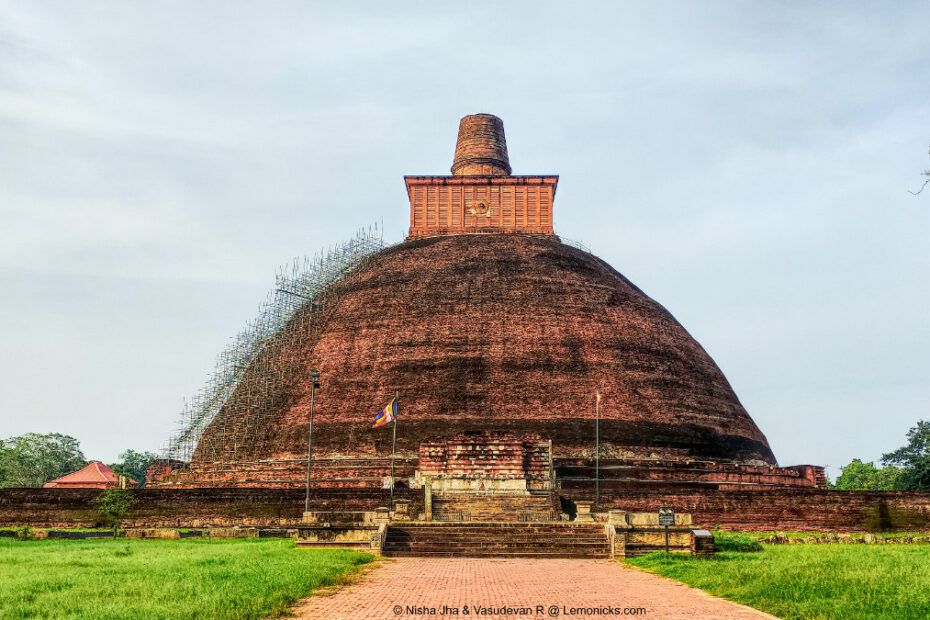
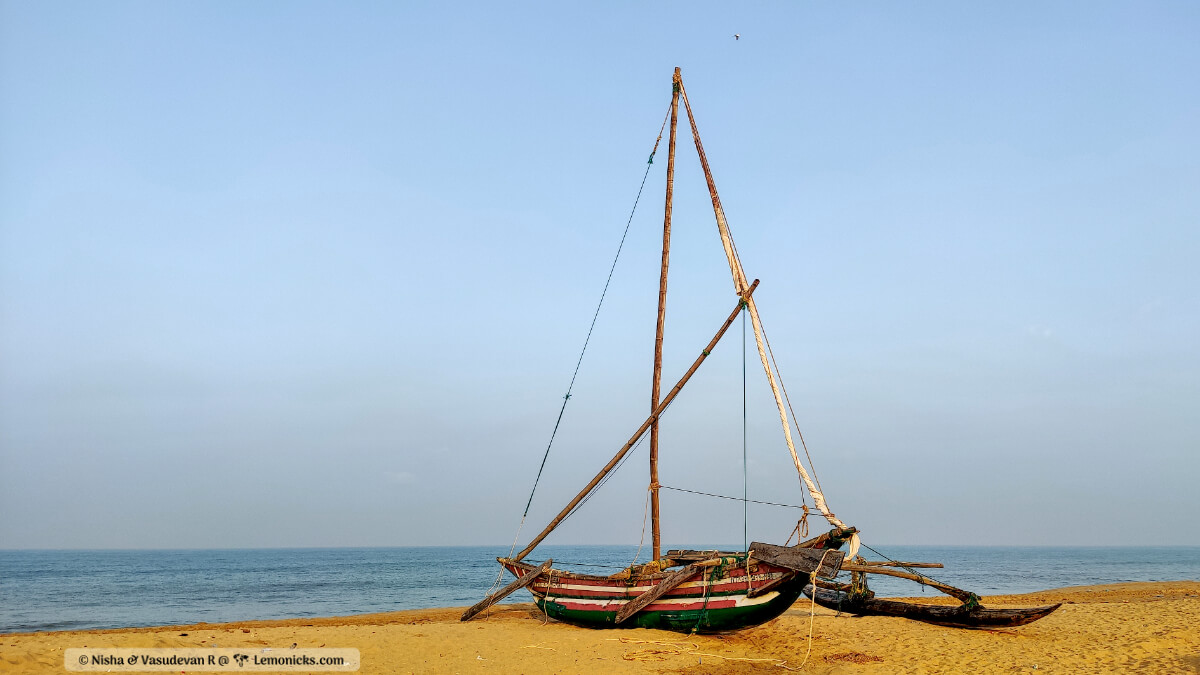
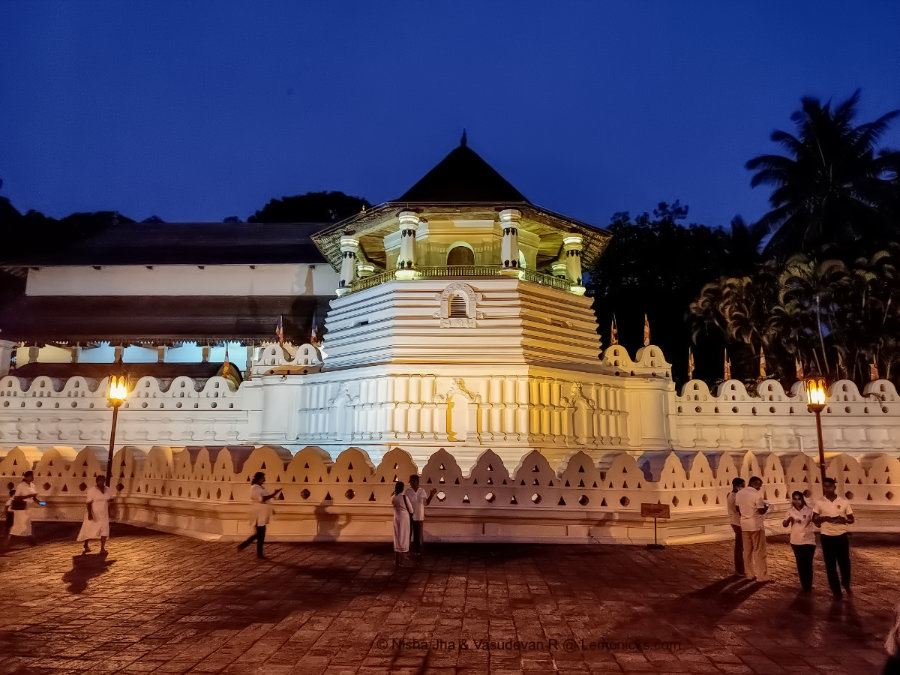

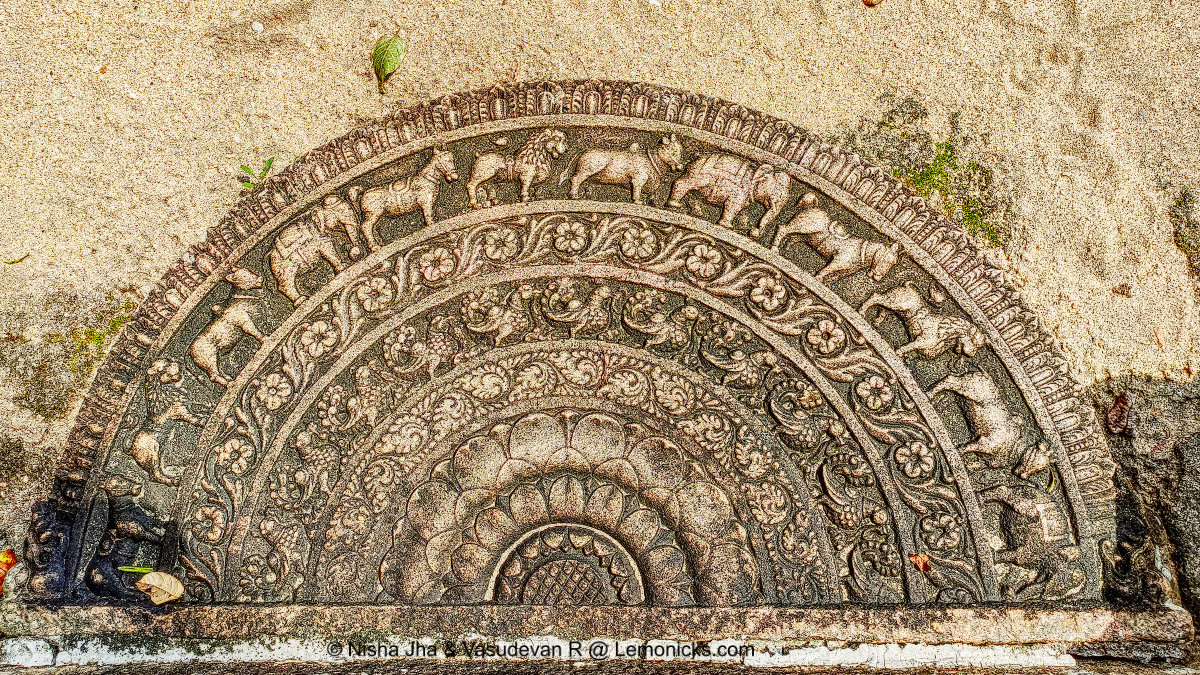
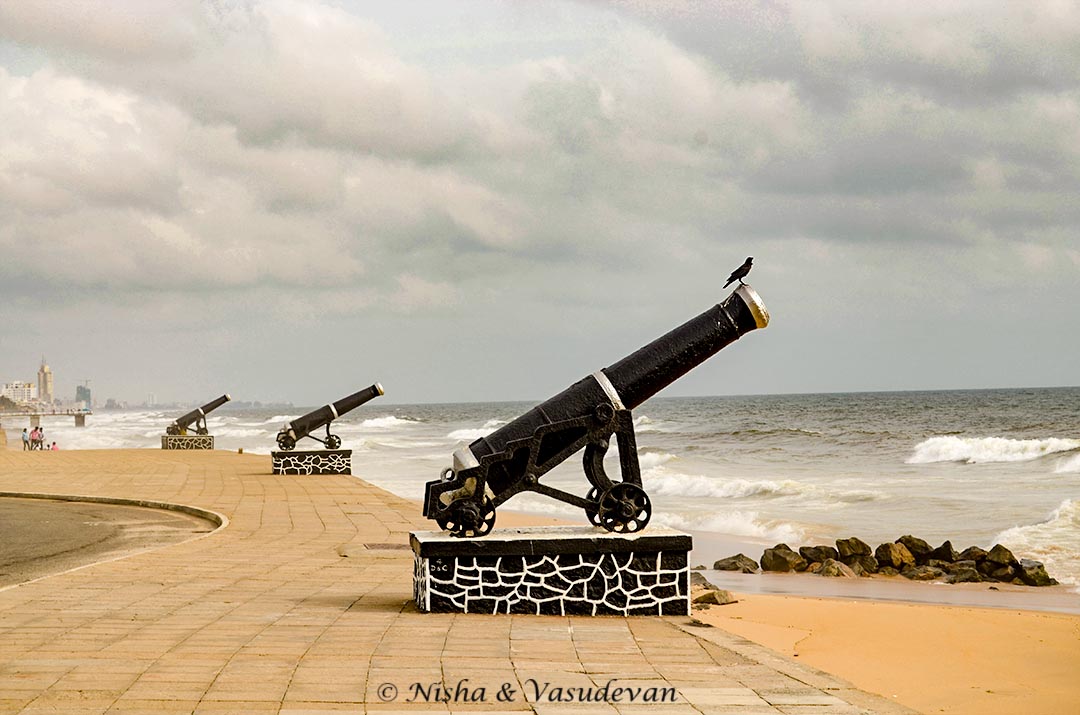

These are some very interesting heritage sites in Sri Lanka. The country doesn’t seem to be lacking in heritage sites or history. I found many of the stories connected to India. 🙂
I agree completely. The connection with India has been there for thousands of years. People from both countries have been visiting the each other a lot.
Brilliant documentation of all the UNESCO Heritage sites in Sri Lanka. So happy to have ticked them all 🙂
Thanks a bunch, Ketki. It was indeed a great learning experience especially with the company we had!
I have always wanted to visit Sri Lanka, and I hope that our family can make it there next year! I loved reading through your recommendations for UNESCO world heritage sites. They all look great, but the Ancient City of Sigiriya, the Hilltop Palace, would be my top priority. Thank you for including the tips for traveling there. It is always important to prepare culturally when it comes to dressing appropriately, etc.
Thank you for sharing!
I always enjoy visiting UNESCO World Heritage sites. There’s always good reason to protect these incredible sites. Of the list, I’m most intrigued by the bodhi tree. to think it was planted 2,300 years ago, and that the sacred city was built around it.
oh wow, i had no idea Sri Lanka was that cool…it’s off the coast of India right? I have heard about it but never thought to visit until I saw your blog. Reminds me a lot of Myanmar and Thailand, and less of India….super cool!
On the travel wish list! Would love to visit Sri Lanka. So it was great to learn more about the top 5 UNESCO sites. Anuradhapura alone looks like it would require several days to see all the great sights. And I would certainly make time to visit the ancient city of Sigiriya and the Lions Paws. I can see why you were impressed by the stonework and scultptures and the Nissankamulla Palace. I am always fascinated when UNESCO names a complete city like Kandy. You have to know there is much to see.
I visited Sri Lanka not long ago for 1.5 months, and it was amazing. I’ve been to 4 out of 5 UNESCO World Heritage sites on this list, and there was so much to see. My favorite ones are Sigiriya and the Ancient city of Polonnaruwa. I’d love to visit Anuradhapura on my next trip and see the Sri Mahabodhi tree.
You had such a great trip and the chance to admire the incredible UNESCO world heritage sites in Sri Lanka. It’s on my bucket list. I would love to visit the Sacred City of Anuradhapura as I’m interested in the history of Buddhism. It’s great that you provide tips and ticket prices. I hope to see Sri Mahabodhi Tree, Thuparamaya Stupa and Abhayagiri Dagoba one day. Also, the Ancient City of Sigiriya is on my list. It’s such photogenic rocks, and the view from the top is incredible. Royal Palace with 1000 rooms must be impressive as well. It’s a great guide to must-see places in Sri Lanka; great that you provide tips with prices and opening hours!
These top 5 UNESCO world heritage sites in Srilanka are fascinating must visit. The ancient sacred city of Anuradhapura when the roots of Buddhism were planted and how the religion was spread by king Ashoka’s son and the planting of the age old Bodhisatva tree by empress Sanghamitra.Also it’s nice to see of Hinduism as in Shiva temple built in Polonnaruwa by Raja raja Chola.The murals and sculptures of Dambulla cave temple, the Tooth relic temple, the stupas of Ruwanwelisaya and Abhaygiri the ancient fort of Sigiriya are mind-blowing places of Srilankan history.
Anuradhapura, Sigiriya and Pollanaruwa has been in my wishlist like forever! I still haven’t managed to visit these places myself. Sigiriya is my most favourite with its Ajanta-like frescoes. The Buddhist Viharas are fascinating, reminding me much of Sanchi Stupa. Haha! I love how you’ve mentioned ‘of Ponniyin Selvan fame’ beside Raja Raja Cholas name. Indeed the king became so much more famous since the movie! Haha. Rangiri Dambulla Cave Temple is fascinating. I haven’t heard much about it. Good to know about its murals & sculptures. I’m definitely gonna visit.
Happy to know that there are many sites in Sri Lanka that have been declared as UNESCO world heritage sites. I agree with you about the importance and value of this in order to protect our cultural heritage and history.
We’d love to visit the Ancient City of Sigiriya in the future. Though it has a sad history, the view is beautiful.
Until now, I was aware only of the Ancient City of Sigiriya, the Hilltop Palace. Now, I can say that I know a lot about Sri Lanka. Thanks for presenting these UNESCO sites in Sri Lanka.